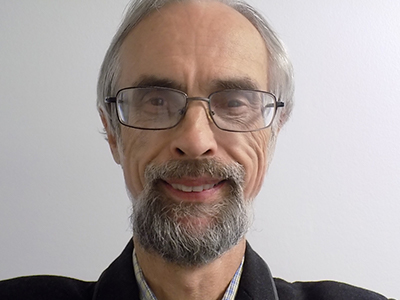Legendary VC John Doerr's ‘Speed & Scale’ Is the Most Important Book You Will Ever Read
John Doerr, the chair of leading venture capital firm Kleiner Perkins, an early investor in Amazon and Google, says companies of all sizes must make addressing climate change their top priority now.

A Bold but Practical Plan to Save Humanity From Itself
John Doerr joined Kleiner Perkins In 1980, long before the Silicon Valley firm became famous for backing some of the most successful tech startups in history, including Google, Amazon, Intuit, Symantec, Twitter, and Square. They were also early boosters of the iPhone. Doerr became managing partner and served in that capacity until 2016 when he stepped up from day-to-day management to become Kleiner’s first-ever chair.
In 2006, he hosted a dinner and private screening of former vice president Al Gore's An Inconvenient Truth, an Oscar-winning documentary about the growing evidence that global warming, the result of humanity’s use of fossil fuels, was an urgent threat to the future of a habitable planet.
In his new book, “Speed & Scale: An Action Plan for Solving Our Climate Crisis,” Doerr wrote, "We went around the table for everyone's reaction. My 15-year-old daughter, Mary, declared with her usual candor, 'I'm scared and I'm angry. Dad, your generation created this problem. You better fix it.' The conversation stopped cold. I didn't know what to say."
Kleiner Perkins wound up investing $1 billion in 70 "clean" technology ventures, notably solar panels and electric car batteries. Most of them were so early that they failed. But the ones that succeeded—including Proterra, Nest, ChargePoint, and Beyond Meat--are worth over $3 billion today.
"But we have no time for a victory lap," Doerr told Startup Savant. "Atmospheric carbon already exceeds the upper limits for climate stability and we're not cutting our emissions fast enough to outrun the severe damage on our doorstep. I wrote this book for leaders of all kinds to help put our plan into action with unprecedented speed and scale. It's for entrepreneurs who are bold risk-takers, business leaders who can mobilize the power of markets, and community leaders who can press elected officials."
Doerr was born in St. Louis, Missouri, and earned a BS and MEE in electrical engineering from Rice University. In 1974, he joined a small California-based startup named Intel as a semiconductor salesman and earned his MBA at Harvard two years later. Andy Grove, one of Intel’s founders, became a mentor. When Doerr decided to shift gears and move to Kleiner Perkins, Grove derided it as no more prestigious than "becoming a real estate agent."
But as microprocessors and then the Internet transformed industries, Doerr anticipated that venture capital would play a pivotal role. Early on, he oversaw financing for Sun Microsystems, Compaq, Netscape, and other pioneers.
Doerr spent most of his career as a self-described "Silicon Valley libertarian" until that challenge from his daughter. In 2008, he helped gain bipartisan backing for California's watershed cap-and-trade law, which would prove that the government could cut emissions while maintaining a thriving economy. In 2015, the law was expanded to include natural gas. In an economy that would rank as the fifth-largest GDP among countries, the program has reduced the state's greenhouse gas emissions by 15%.
In 2009, Doerr testified before a committee of the US House of Representatives in support of the Waxman-Markey cap-and-trade bill that would have levied a tax on carbon emissions. But after heavy lobbying by corporate interests, it was unable to muster 60 votes in the Senate to become law.
Undiscouraged, Doerr pressed on. As he wrote, "In the world of public policy, the political calculus is always changing, but I've found four rules to be of consistent value."
Go for the gigatons. To reach net-zero emissions by 2050 (and get halfway there by 2030), focus on the Big Five emitters responsible for 65% of carbon pollution (China, US, EU, India, Russia). Also: Target solutions for the sectors and activities most responsible for greenhouse gases: the electrical grid, industry, agriculture, transportation, and deforestation. Finally, develop natural and engineered solutions for removing all left-over carbon from the atmosphere.
Know where the decisions are made. Civic activists can have an impact on a wide range of public policies: local building codes, public utility policies, electrification of buses, and climate change education in public schools.
Focus on real-life benefits. Doerr lauds Gore's Climate Reality Project, which has trained 55,000 leaders to build narratives linking climate change actions to shared values and concrete benefits, such as job creation and better health.
Mobilize marginalized groups. In many cases, those most severely affected by global warming are the least able to cope with its devastating impacts. Showing them how to fight back will give hope to their communities. It’s also vital to building winning coalitions.
The Science Behind the Crisis and Solutions
In 2017, Gore followed up An Inconvenient Truth with An Inconvenient Sequel: Truth to Power, which showed how his original warning had been prophetically accurate.
But while the scientific consensus on man-made global warming has long been overwhelming, short-sighted industries have waged a war of denial. Doerr notes that an Exxon scientist told executives about the threat as far back as 1977, two decades before the company’s merger with Mobil.
Today, shareholders of many public companies (including ExxonMobil) are demanding an accounting of what they are doing to keep the planet from going over the climate cliff. Some of the biggest, like Walmart and General Motors, are setting examples for enterprises of any size.
The politics are also changing. According to a 2020 survey by the Pew Research Center, two-thirds of Republicans aged 18 to 39 agree that human activity is a major factor in climate change.
The targeted sectors:
Industry: Global manufacturing releases 12 gigatons of greenhouse gases annually into the atmosphere, about 20% of the total. The biggest sources are steel (four gigatons) and cement (three gigatons), where China is the biggest player.
Manufacturing plastics, chemicals, paper, aluminum, glass, and apparel requires fossil fuels for heat. Relatively little is recycled (only 9% of plastic waste), and much winds up incinerated, generating even more carbon emissions. It is now technologically feasible to electrify manufacturing that accounts for at least half of industrial fuel consumption.
Farming: Together, livestock and food waste are responsible for seven gigatons of carbon emissions, or 12% of the annual global total. The burping and manure of the world's one billion cows are responsible for 4.6 gigatons, mainly in methane, the second most prevalent greenhouse gas, after carbon dioxide (Kleiner Perkins has invested in Beyond Meat, which produces plant-based protein alternatives to beef).
Transportation: From cars to planes, this sector is responsible for eight gigatons of emissions; the goal is to cut that to two gigatons by 2030. Trucks and buses represent just 10% of total vehicles on the road but emit 30% of greenhouse gases. Last year, Ford unveiled the new all-electric Ford-150 pickup, the number-one-selling US vehicle for the past 44 years. GM has committed to stop making internal combustion engines by 2035.
Electrical Grid: The power sector is responsible for 24 gigatons, one-third of the total, and the goal is to reduce this to three gigatons by 2050. New installations of solar and wind are now the cheapest energy sources in two-thirds of the world. France, the UK, Germany, Italy, Japan, and Brazil lead the US in generating more economic output with fewer emissions from fossil fuels.
Nature: Trees take in carbon dioxide and emit oxygen; they can be an important ally in reaching net zero. But when they are burned, whether by wildfires or for fuel, their stored carbon is released into the atmosphere.
Deforestation accounts for six gigatons of annual emissions, or 10% of the global total; we urgently need to move from deforestation to reforestation, Doerr says. Meanwhile, oceans provide half the world's oxygen but are becoming toxic stores for atmospheric carbon, which is then stirred up from the floor by deep-sea fishing and mining. Plastic pollution is killing marine life, while warming water is destroying the coral reefs. International cooperation needs to be significantly ramped up.
Investing in Green Innovation
Preventing the worst effects of climate change requires much greater private and public investment in innovation. Doerr writes:
- Governments can provide incentives with loan guarantees, tax credits, and grants for zero-emissions technologies, fully paid for by eliminating current subsidies for fossil fuels.
- Just as the US federal government’s Advanced Research Projects Agency (ARPA) funded the development of the internet half a century ago, governments need to increase R&D funding of basic and applied research for climate-related technologies, such as green hydrogen and carbon removal.
- Venture capital funding from institutional investors (university endowments, pension funds, and governments) and high net-worth individuals needs to be four times greater, with checks for $250,000 to $250 million.
- Project financing—the largest single resource for planet-saving innovation--can tie funding to proven technologies by public and private banks.
- Philanthropic investing can easily be tripled since foundations control $1.5 trillion globally and $890 billion in the US alone. They can play a lead role in helping poor and climate-vulnerable communities, and in protecting forests, oceans, and lands before it is too late for recovery.
*One trend to watch is the surge of special-purpose acquisition companies, or SPACs, which acquire early-stage ventures.
Doerr's 2018 best-selling book, Measure What Matters, showed organizations how to implement Andy Grove's proven goal-setting system of OKRs (Objectives and Key Results). His new book applies the same system to solve the climate crisis.
The 300 pages of facts and technical data might at times seem overwhelming, but the reader can pick the most relevant sections and decide what should be prioritized within a company's or individual's capacities. The book is enlivened by interviews with household names (including Jeff Bezos and Bill Gates) and lesser-known activists and leaders, like Sunrun’s Lynn Jurich and Margot Brown of the Environmental Defense Fund.
Doerr has battle-hardened advice for entrepreneurs and investors who want to help address the greatest crisis in human history:
- Be ruthless in identifying key risks up front and removing them.
- Learn to be great at fundraising — which should never end since new opportunities will keep opening up. Seek out corporate partners.
- Recognize that consumers won’t pay more for a lesser product just because it is green. Competitive pricing and superior performance are critical.
- Own the relationship with your customer. One lesson from the Great Recession is that companies thrived when they cultivated buyers rather than cutting back on customer service.
- Expect the fossil fuel incumbents to fight tooth and nail to preserve the status quo and free-of-charge carbon pollution. Prepare accordingly.
Done right, Doerr writes, clean technologies “are no longer an investment bubble that might burst, but the biggest opportunity of our lifetimes. Let's open the floodgates of capital.”
About the Author

Scott S. Smith has had over 2,000 articles and interviews published in nearly 200 media, including Los Angeles Magazine, American Airlines’ American Way, and Investor’s Business Daily. His interview subjects have included Bill Gates, Richard Branson, Meg Whitman, Reed Hastings, Howard Schultz, Larry Ellison, Kathy Ireland, and Quincy Jones.
Startup Resources
- Learn more about Startups
- Visit the TRUiC Business Name Generator
- Check out the TRUiC Logo Maker
- Read our Business Formation Services Review
- Find Startup Ideas
- Explore Business Resources
Form Your Startup
Ready to formally establish your startup? Click below to read our review of the best business formation services!
Best Business Formation Services